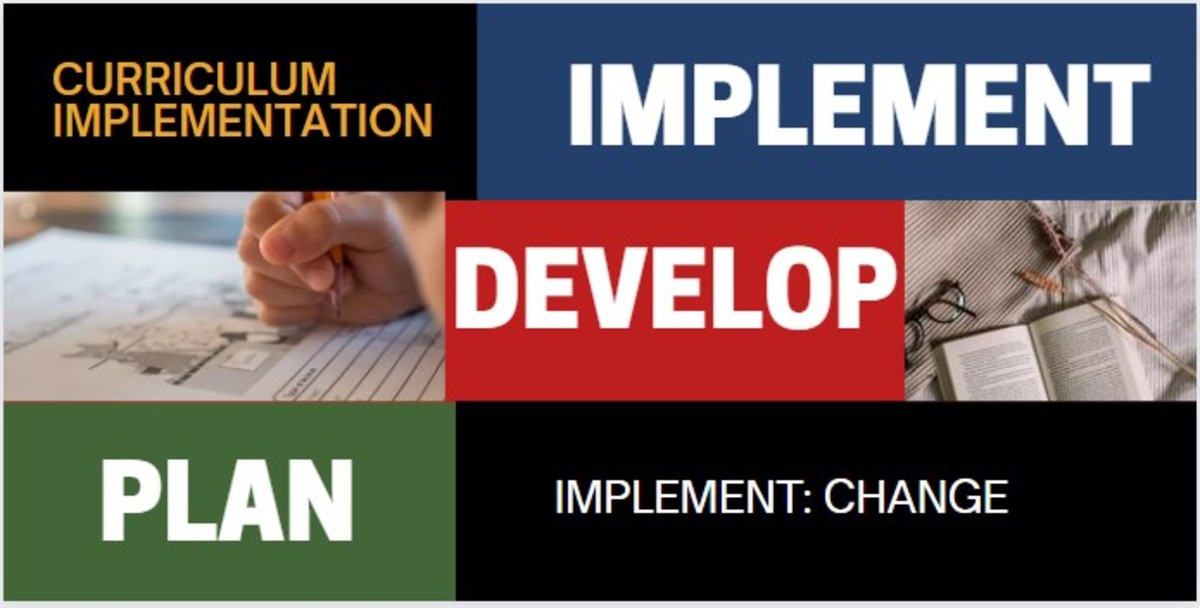What Is Instructional Systems Design?

Systematic Process
I just finished watching a seven-minute online instructional video on how to use a particular website (which will remain anonymous). It was almost painful to watch. The person narrating clearly knew what he was doing, and had a general idea of what he wanted to impart. What was painful was the lack of organization and preparation, which made about two minutes of content take seven minutes to deliver. Plus, there was completely irrelevant information included. That is where Instructional Systems Design (ISD) could have helped.
ISD is a systematic process that uses learning theory and instructional theory to enhance the quality of instruction and instructional materials, and ultimately the quality of the learning process. As a discipline, ISD is concerned with the process of developing and implementing instructional strategies.
ISD attempts to ensure that what is being taught is what the learners need in order to achieve predefined operational results. It does this by approaching the complex process of learning in a very systematic fashion, thus minimizing oversights and rework.
One might compare ISD to the programming of software. By spending up-front time in analysis and design, you can avoid many mistakes and much extra work. Likewise, in the design of instructional products, a systematic process has proved much more effective than starting right off producing learning materials. Used extensively by the military for many years, ISD methodologies have been widely adopted by business and industrial training organizations.
Multiple Models
Models for Instructional Design furnish specific operational patterns for the selection of instructional strategies and the construction of instructional materials. A wealth of models have been developed over the years, in a variety of contexts. However, you will find that most ISD models are more alike than different, at least in terms of which components are included in the various models, if not in terms of how the components are related.
While it is true that no single model will be equally successful in all organizational settings, there is one model that seems to have stood the test of time. It has been called the ADDIE model or the generic model of instructional design, and it seems to be the currently prevailing model in training literature.
The ADDIE Model
One of the most widely practiced models of instructional design is the ADDIE model, which is actually an acronym based on the first letter of the five instructional design phases included in the model as follows: (A) analysis, (D) design, (D) development, (I) implementation, and (E) evaluation. The ADDIE model has been the prevailing model of instructional design for more than three decades.
Analysis
The analysis phase (phase one) is the foundation for all other phases. In this phase, the instructional designer conducts a needs assessment, a job-task analysis, a learner analysis, and a context analysis. During the analysis phase the designer also establishes high level goals for the training intervention, identifies resources and constraints, and gathers as much additional information as possible that may be needed to complete the project.
One of the most important aspects of the analysis phase is verification that a training need actually exists, which is an obvious, yet sometime overlooked step. Data must be collected to identify gaps between the expected level of performance and what is actually being achieved. Most importantly, the designer must establish a link between these gaps and some deficiency in employee knowledge, skills, and/or attitude. If the gaps exist for some other reason, e.g., problems with equipment or interdepartmental communication, then training may not be the appropriate approach.
The designer must address the nature of the target population that will receive the training, which is also referred to as the learner analysis. This portion of the analysis involves specifying the target audience for training and analyzing its members’ knowledge, skills, attitudes, and competencies to determine what they already know and what they need to learn to become fully proficient. The designer might also consider education levels, cultural influences, language skills, learning styles, levels of participants’ motivation, organizational political streams, and relevant past experience with the subject matter.
Instructional goals for the training program are usually written during the analysis phase. These goals are based upon the analysis that has been conducted thus far, and need to take into account the reality of what resources will be available, and what constraints exist. The goals that are established in the analysis phase will assist the designer in writing specific performance objectives during the design phase.
Design
The design phase (phase two) provides the overall structure for the training program. The primary output of the design phase is a plan, sometimes referred to as a design document, blueprint, or map. These plans are usually very detailed, and supported by thorough data collection and evaluation. It has been estimated that the analysis and design phase together can take up to 50% of the total project effort.
Actual construction of the items specified in the design blueprint is held for the development phase (phase three). Some confusion continues about the differences between instructional design and development. This is compounded by the inconsistent use of these terms among practitioners. As used here, the term design refers to activities associated with specifying the instructional system and building a blueprint for a training program. This might be thought of as analogous to the architectural phase of training, with development as the construction phase. In essence, decisions are made in the design phase that are carried out in the development phase.
During the design phase, specific learning objectives are written, the course content is outlined, instructional strategies and methods are chosen, an evaluation plan is prepared, and resource requirements are specified. Other items noted in the design plan may include a list of manuals and handouts to be developed, a choice of audio and video support materials to be used, the types of lesson plans or facilitator guides that will be needed, decisions regarding program documentation strategies, and a list of project management milestones and deadlines.
Before proceeding, the designer will need to show the completed design blueprint to the primary decision makers. It is extremely important to verify that the proposed training program, as envisioned in the training blueprint, meets the expectations of these decision makers. To increase the likelihood of success, the development phase should not commence until consensus is reached regarding the plan. Adjustments made during this phase are less costly and time consuming that corrections made later in the development process. Although not required, it is sound policy to ask for signatures from key decision makers, which formalizes this decision point, and can avoid contentious conversations downstream.
Development
The development phase (phase three) builds upon the foundation established in the analysis phase and the design phase. Actual construction of training program materials begins in the phase, using the design blueprint as a guide. Items created during the development phase include, but are not limited to, leader’s guides, participant workbooks, reference manuals, tests or other assessment materials, audio and visual support materials, simulations or learning activities, props or work samples, and even games.
It should be noted that some materials may need to be created “from scratch,” if the learning situation or training need is fairly unique. At other times, existing training materials may be either purchased or modified, that will satisfy the requirements of the training blueprint. However, existing materials should never be “force fit” into the training program, merely to save time or money. This would subvert the intent of using a systematic design process.
Some disagreement exists in the literature concerning whether or not pilot tests (tryouts) occur in the development phase, or whether they are included in the implementation phase. Some authors describe the field or beta test of the project as occurring during the development phase. Others list the pilot test as the first step of the implementation phase. Either way, verification that the newly developed training program realizes the intended objectives is best achieved prior to full-scale implementation. This can be accomplished with a small sample (even as small as one person) of the target audience, or through consultation with subject matter experts.
Implementation
The implementation phase (phase four) involves the roll-out of the new training program to the intended audience. As discussed above, this should occur only after the materials have been tested with a relatively small pilot group. Revisions based upon the pilot program are most economical when they take place prior to full-scale production of the training materials, particularly if the training audience is large.
While this phase is actually “where the rubber meets the road,” it is sometimes given modest treatment in the literature on instructional design. It is generally assumed that if the planning and development of the instruction has been effective, then the implementation should go smoothly. This is a rather myopic perspective, lacking empathy for those in the training delivery group, who are tasked with scheduling, coordination, monitoring, record keeping, and sometimes organizational politics during the implementation phase.
One way to mitigate this situation is to prepare and conduct a “train-the-trainer” program, to acquaint the delivery personnel (e.g., instructors, trainers, facilitators, teachers, etc.) with the new program, and prepare them to deliver it. If the trainers have not been involved in the course design, then the step may require extensive preparation on their part.
While evaluation is the fifth and final phase of the ADDIE model, it is during the implementation phase that evaluation begins to receive serious attention. The following list of evaluation-related activities occur during implementation:
- evaluation of learner’s ability to meet program objectives
- evaluation of program design by facilitators
- review of materials prepared for the program
- review of implementation-specific elements such as class size, format, etc.
- modification of design and materials as suggested by evaluation
While this is the beginning of evaluation, there is much more to come in the future, particularly after the training program participants have returned to their jobs.
Evaluation
The evaluation phase (phase five) appears to occur last in the ADDIE model, yet in practical application, it is an integral part of each of the preceding four phases. Evaluation occurs within each phase, between the phases, as well as after the implementation of the training program. It is important to build an evaluation plan into the design blueprint from the very beginning.
There are two types of evaluation, namely formative and summative. Formative evaluation occurs during and between the first four design phases, and its intended to improve the instructional materials prior to final implementation. Summative evaluation assesses the overall effectiveness or impact of the instruction.
In Conclusion
Organizational leaders frequently complain that ISD “takes too long and costs too much.” However, as with most things in life, to do something right is going to take longer and cost more than “guessing” at a solution. And a well-designed training program is going to save money and resources down the road.
This content is accurate and true to the best of the author’s knowledge and is not meant to substitute for formal and individualized advice from a qualified professional.
© 2015 Carolyn Fields








